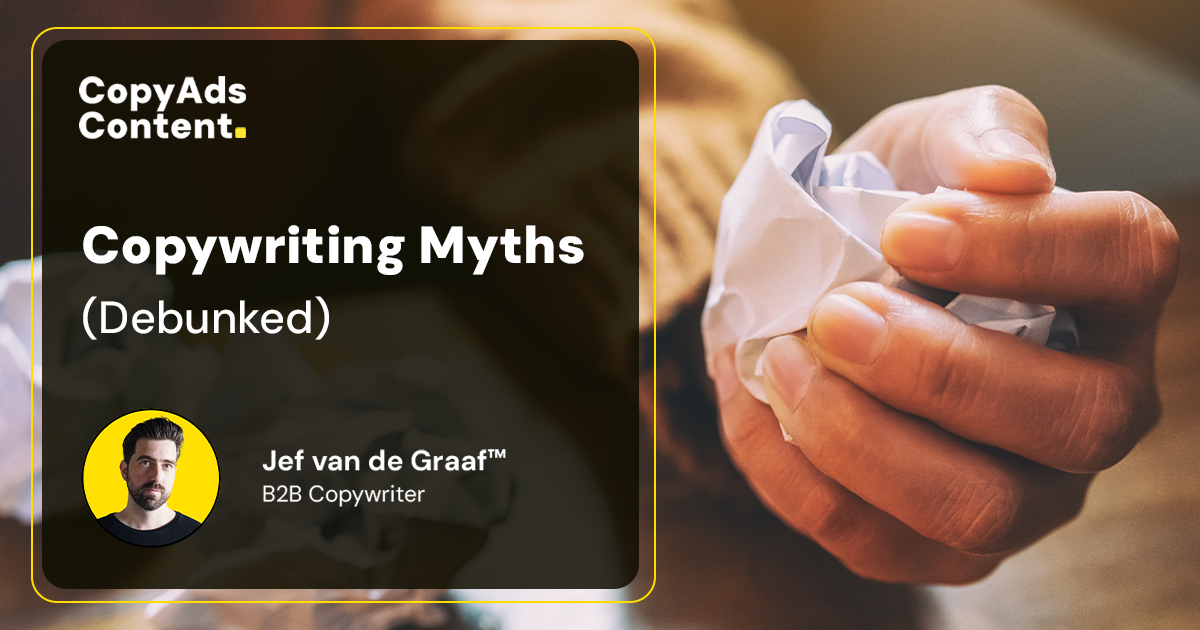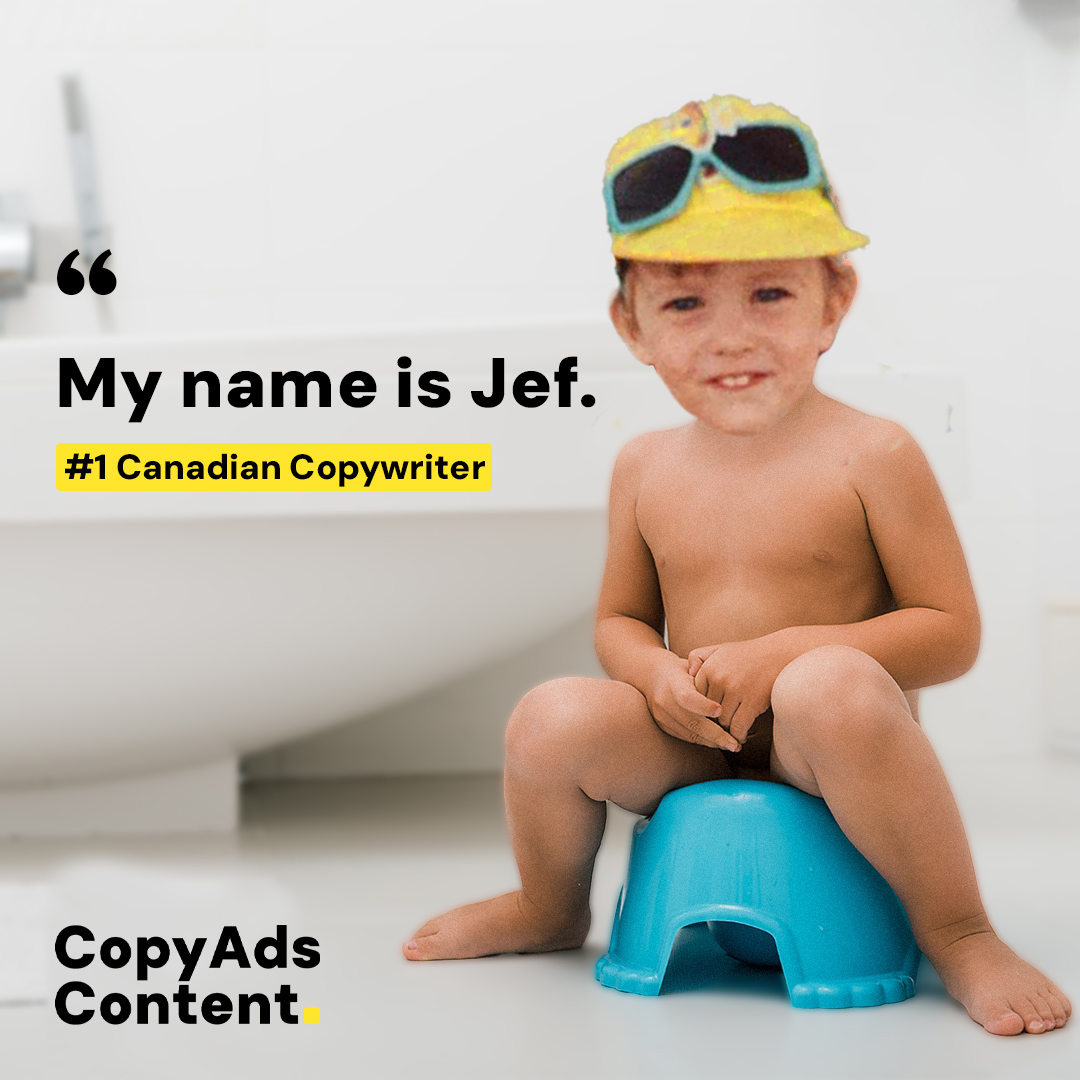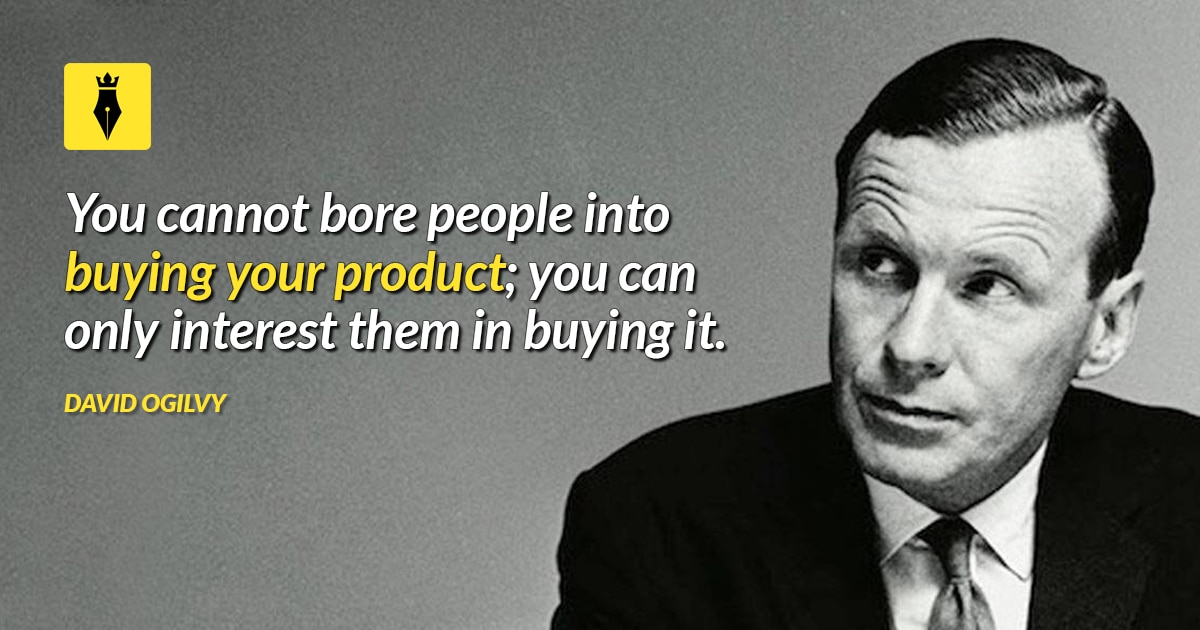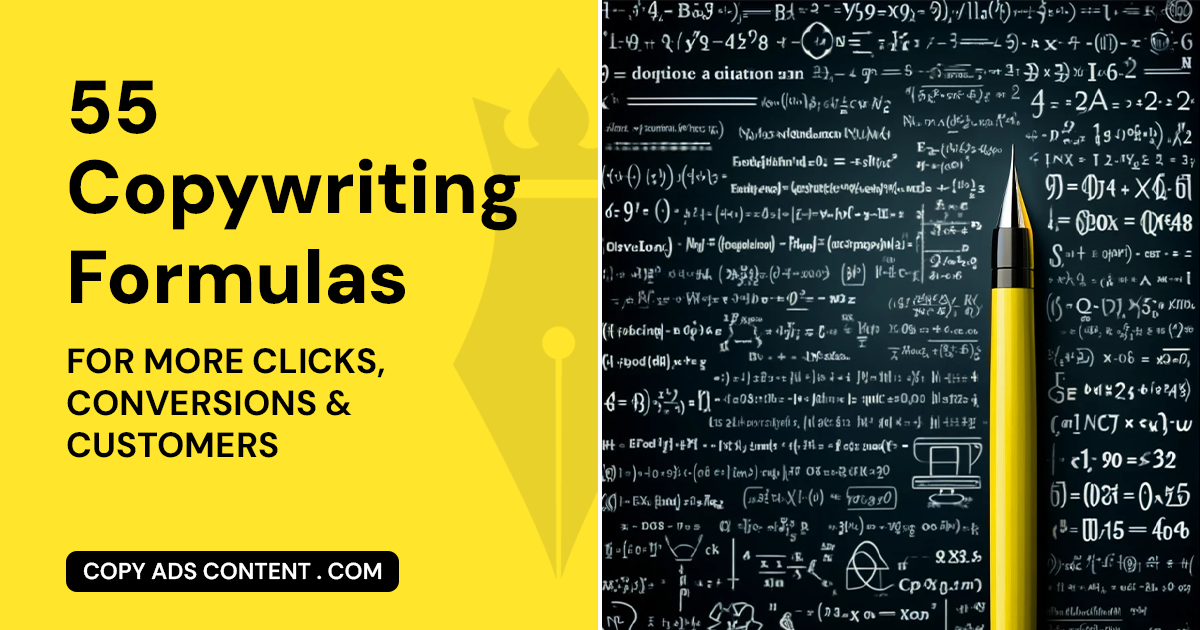Copywriting shapes how we see the world, from the ads we click to the product descriptions we trust. It’s a skill that quietly powers websites, social media, and marketing campaigns. All the while, influencing decisions big and small.
But despite its presence, copywriting remains one of the most misunderstood disciplines in marketing. Myths about what it is—and isn’t—often lead businesses astray, resulting in wasted time, money, and missed opportunities.
Let’s set the record straight. Here are 10 common copywriting myths, debunked, so you can unleash its full potential for your business.

COPYWRITING MYTH #1:
Copywriting is just writing.
Picture this: you land on a website that seems to understand you completely. The headline grabs your attention, the body copy speaks to your needs, and the call-to-action feels like the next logical step.
That’s not just writing—it’s a crafted experience.
Copywriting is the art of delivering the right message, to the right audience, at exactly the right time. That means creating copy that:
- educates comparison shoppers about the benefits of your business over others;
- reassures hesitant buyers who need a little more trust; and,
- inspires loyal customers to try something new from your offerings.
So, don’t think copywriting is just words.
It’s about understanding psychology, using persuasion (ehtically), and applying strategy to guide people toward action.
If you’ve ever felt like a piece of writing spoke directly to your frustrations, your dreams, and ultimately led you to take action—whether that’s making a purchase, signing up to a newsletter, or simply clicking “Learn More”—that’s good copywriting at work.
COPYWRITING MYTH #2:
Good copy sells anything to anyone.
“You’re a copywriter, right? You’ll be able to write anything and make it sell.”
I hate when people say this. Just because I write copy for a living doesn’t mean I can convince anyone to buy anything. That’s not how copywriting works.
There’s a phrase people throw around: “You could sell ice to Eskimos.”
It’s supposed to mean you can convince anyone to buy something, even if they don’t need it. But here’s the thing—selling ice to people who already have plenty isn’t impressive; it’s pointless.
The truth is, even the best copy will fail if it’s selling to the wrong audience or promoting something people don’t need.
Copywriting succeeds when there’s message-market fit—when the message resonates with the right audience by addressing their specific needs, problems, or desires.
Without that alignment, even beautifully crafted words will fall flat. Here’s how it breaks down:
| Signs of Misaligned Messaging | What Happens with Message-Market Fit |
|---|---|
| ❌ Confuses or frustrates the audience | ✅ Speaks directly to their needs and desires |
| ❌ Over-promises and under-delivers | ✅ Sets clear, realistic expectations |
| ❌ Focuses on features, not benefits | ✅ Highlights how it solves real problems |
| ❌ Generic, one-size-fits-all language | ✅ Personalized, relevant, and relatable |
| ❌ Low engagement and high bounce rates | ✅ Builds trust and inspires action |
Great copy doesn’t manipulate or trick anyone. It connects with people who are already looking for a solution and shows them why your product or service is the right fit.
COPYWRITING MYTH #3:
Good copy sells anything to anyone.
It’s easy to fall into the trap of thinking more words mean more convincing copy. After all, more words mean more details, right?
But in reality, overwriting does the opposite—it loses attention and overwhelms your audience.
Imagine opening a product description for a smartphone. Instead of a clear, concise list of features, you’re greeted with paragraphs that bury the information you need under unnecessary details. Frustrating, isn’t it?
Great copy is about clarity, not length. Whether it’s a two-word tagline or a 2,000-word sales page, every word must serve a purpose. If it doesn’t, it’s only getting in the way.
Here’s the difference:
| Overwritten Copy | Concise Copy |
|---|---|
| ❌ “This innovative smartphone, designed with cutting-edge technology, offers an ultra-high-definition display that brings unparalleled clarity and stunning visuals to your viewing experience.” | ✅ “Ultra HD display for stunning clarity.” |
| ❌ “Our team has worked tirelessly to design this product with premium materials to ensure durability, longevity, and an elevated user experience.” | ✅ “Built for durability with premium materials.” |
When it comes to copywriting, less is often more. Clear, concise messaging respects your audience’s time and keeps them engaged.
So, don’t focus on how much you can say. Focus on how effectively you can say it.
COPYWRITING MYTH #4:
Every writer is a copywriter.
This one hits close to home for me (you’ll read why in a moment). People often assume that if you can string a sentence together, you can be a copywriter.
And with the rise of AI, it seems like everyone’s got David Ogilvy-like copywriting skills.
Well, they don’t.
For your copywriting to work, it needs to understand people: their struggles, desires, and motivations.
And that’s something I learned the hard way when I failed Grade 12 English.
You see, my English teacher told me my writing was “too flowery.” I used complex, uncommon words, and my paragraphs were embarrassingly long-winded.
Why? Because the way I wrote was shaped by my love of classic literature. I admired authors like Voltaire and Hemingway, and my writing reflected their styles.
But my essays were better suited for storytelling than meeting structured rubrics.
And that’s the key—good copywriting isn’t about showing off how well you can write. It’s about clarity, focus, and purpose.
You need a well-thought-out message that connects with your audience and gives them exactly what they need, without distractions or fluff.
Now, back to the AI issue, which tends to blur the lines even more.
AI is a powerful tool—it can churn out unlimited words in seconds. But those words aren’t strategy, and they don’t come with context or insight. AI doesn’t know your audience’s deepest frustrations or biggest dreams.
Take it from me: if you want your words to land, learn the fundamentals of effective communication. Don’t make the same mistakes I did.
And don’t fall into the trap of thinking AI can do it all. With the right human guidance, it can be a powerful ally—but it’ll never replace the understanding and empathy that come with real copywriting expertise.
Goodbye, Copywriting Myths
These are just four of the many misconceptions about copywriting. As you’ve seen, great copy is more than just words on a page—it’s a thoughtful blend of strategy, empathy, and connection.
Want more tips on how to improve your copy and connect with your audience? Join my newsletter to get no-BS copywriting insights delivered straight to your inbox.
And if you’re ready to take your website’s messaging to the next level, let’s talk.





